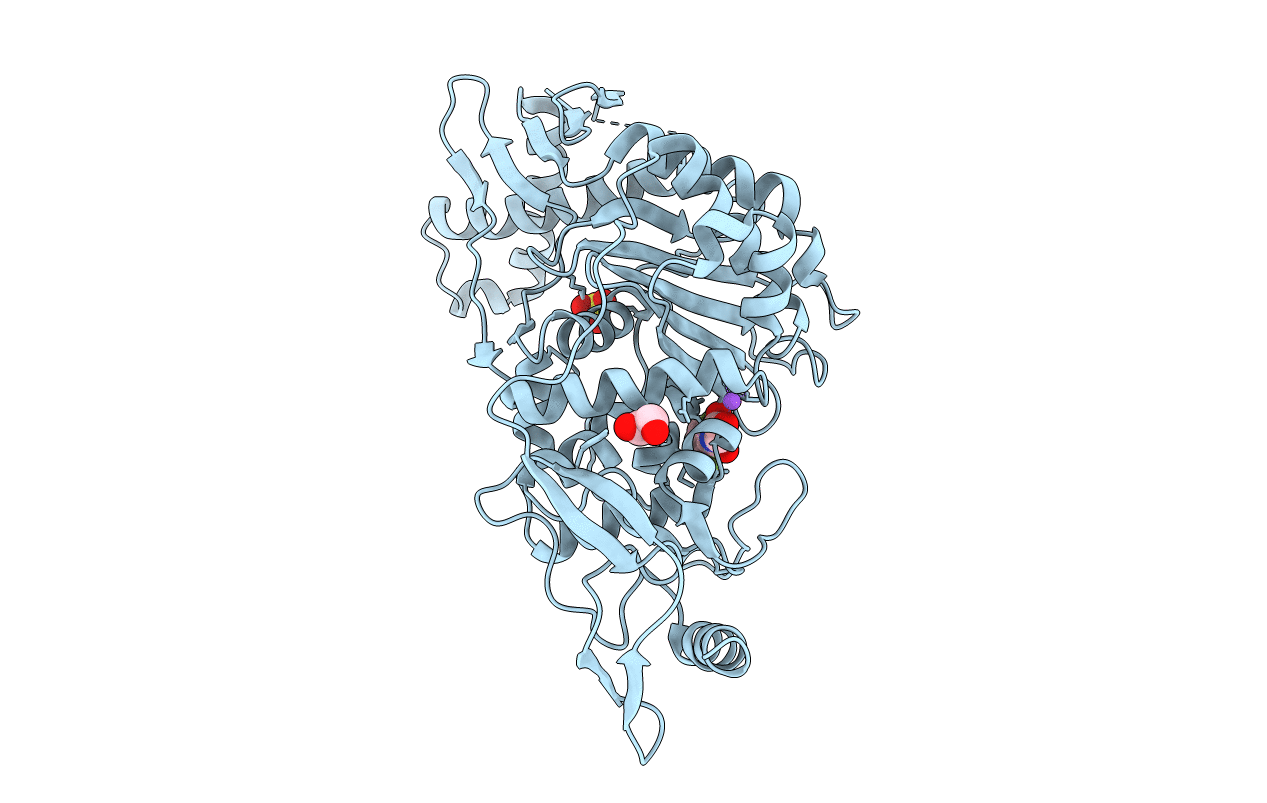
Deposition Date
2010-12-15
Release Date
2011-08-03
Last Version Date
2024-11-06
Entry Detail
PDB ID:
2Y2K
Keywords:
Title:
PENICILLIN-BINDING PROTEIN 1B (PBP-1B) IN COMPLEX WITH AN ALKYL BORONATE (ZA5)
Biological Source:
Source Organism:
STREPTOCOCCUS PNEUMONIAE (Taxon ID: 171101)
Host Organism:
Method Details:
Experimental Method:
Resolution:
2.09 Å
R-Value Free:
0.26
R-Value Work:
0.20
R-Value Observed:
0.20
Space Group:
C 2 2 21


